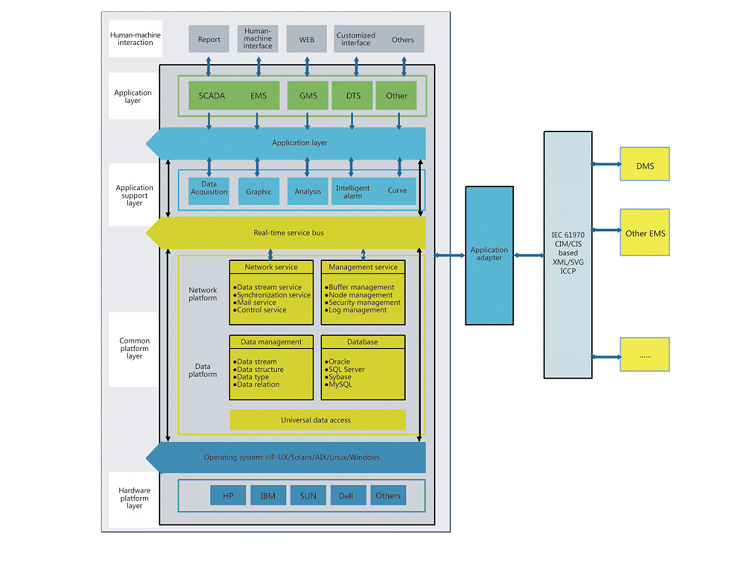DF8000 SCADA/EMS system, based on CORBA specifications, conforms to SOA architecture and IEC61970 standards, incorporating the latest computer communication technology, database technology, object-oriented technology, component technology and Internet technology, so as to develop a new-generation transmission system solution.
DF8000 SCADA/EMS system is integrated with the unified platform and module design, covering the power generation control applications, power grid monitoring applications, power grid operation analysis and optimization applications, intelligent analysis and auxiliary decision-making applications and power grid simulation applications. It enables not only solving the monitoring, control and optimization problems of users on the power generation and transmission sides, but also fully protecting the investment of users through the modular component technology.

Construction based on IEC62351 and NERC safety standards
Follow IEC61970 standards and support the function of accessing to IEC61850 smart substation
Achieved with distributed acquisition and monitoring technology, supporting RTU accesses.
Based on SOA architecture, enabling horizontal integration and vertical penetration of the system
Comprehensive intelligent dispatching aid decision-making function, enabling the improvement of power grid dispatching from the analytical to the intelligent
Support the mixed of system hardware equipment and operating system, i.e. ensure system security, usability and scalability while fully protecting user investment
Powerful protocol library technology and enabling quickly accessing to various standard protocols, and rapidly customizing and developing non-standard protocols
The network platform is based on the distributed application trigger mechanism, enabling the free deployment and free migration of services, and, under extreme conditions, achieving all system functions with only one server.
Support isomorphic dual-activity mode of main and standby systems
| Application type | Application functions |
|---|---|
| Real-time monitoring and analysis |
Data acquisition,storage and storage Real-time monitoring and intelligent alarm Data modeling and data mining Report, remote maintenance and WEB |
| Network analysis and optimization |
Network topology, state estimation Powerflow, short circuit analysis Contingency analysis, static voltage stability Transient stability, sensitivity analysis Optimal power flow, AVC |
| Power generation control and dispatching |
Load forecasting, AGC, Reserve monitor Economic dispatch, generation scheduling, Interchange transaction scheduling Maintenance scheduling, production cost analysis Unit combination |
| Intelligent aid decision making |
Power outage range analysis, power outage load transferring, overload transferring, intelligent switching order, aid decision making for load shedding, risk analysis of looping power supply risk analysis and power grid risk assessment, aid decision making of fault line selection for single-phase to ground and comprehensive analysis |
| Training simulation |
Steady-state simulation Dynamic-state simulation Dispatcher training Evaluation of training results Test mode |